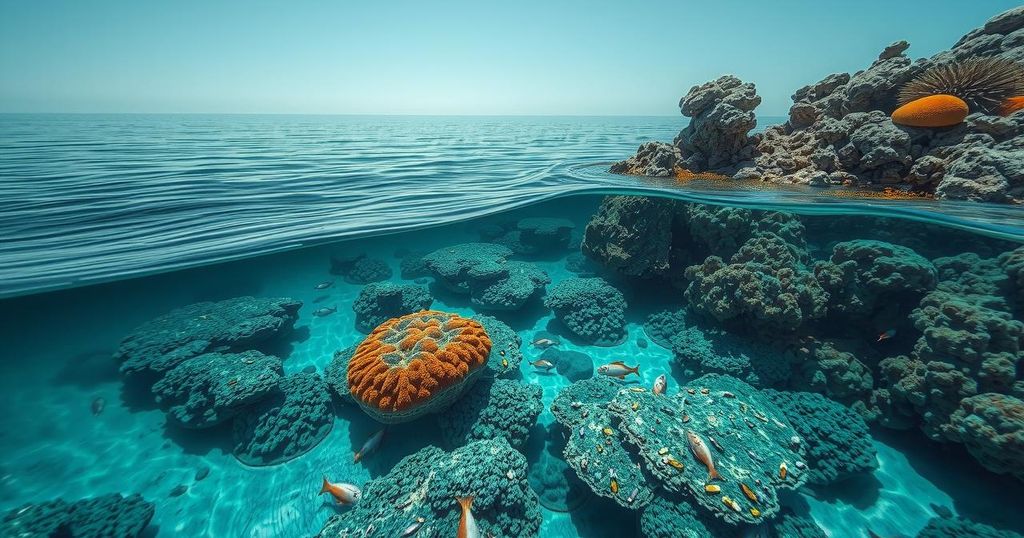Climate Change Linked to Marine Heatwaves and Fish Deaths Off WA Coast

Climate change has increased the likelihood of marine heatwaves off the coast of Western Australia, leading to the deaths of around 30,000 fish. Research indicates that conditions experienced in November were up to 100 times more likely due to climate change, exacerbating prolonged thermal stress on marine life. Moreover, nearly 90% of marine heatwaves can now be traced back to human-induced global warming, affecting local fishing and tourism industries.
Recent research has indicated that climate change has significantly increased the likelihood of marine heatwaves off the coast of Western Australia, correlating with the deaths of approximately 30,000 fish. These heatwaves have been persistent since September of the previous year, particularly affecting the north-western regions where ocean temperatures were recorded at 1.5°C above average over five months. At times, surface temperatures soared to 4-5°C higher than usual.
A study by Climate Central employed advanced climate attribution methods, revealing that climate change raised the probability of these marine heatwaves occurring, especially highlighting that the extreme conditions in November were as much as 100 times more likely due to human-induced climate factors. Dr. Andrew Pershing, chief program officer at Climate Central, emphasized that the unprecedented heat experienced off the WA coast directly associates with fossil fuel consumption
According to the research, nearly 90% of marine heatwaves are now linked to anthropogenic global warming, with expectations that their frequency and severity will increase as emissions continue to rise. Prolonged thermal stress resulting from these heatwaves has been identified as a contributing factor to the mass fish fatalities observed along the Pilbara coast of WA. Further repercussions for related industries, such as fishing and tourism, have also been foreseen.
The impact of previous marine heatwaves, such as the one in 2010-11, showcases the damaging repercussions, including a significant loss of seagrass meadows in Shark Bay. Dr. Matt Rayson, an oceanographer from the University of Western Australia, noted that the rising heat has gradually spread from the northern regions to the western coast, evidencing unusual temperature increases beneath the ocean surface. He indicated that the ocean absorbs approximately 90% of the surplus energy from greenhouse gas emissions, raising the likelihood of consequential oceanic heatwaves and severe weather events.
As of January, the marine heat off the WA coast continues to escalate, with ocean temperatures soaring at least 1.6°C above average. Dr. Pershing reiterated the importance of recognizing that these marine heatwaves are not random; they are a direct consequence of climate change exacerbated by ongoing human pollution. He remarked that the environmental ramifications extend beyond terrestrial concerns, severely impacting marine ecosystems as well.
The article discusses the correlation between climate change and an alarming increase in marine heatwaves affecting Western Australia’s coastline. Such extreme temperature anomalies are linked to significant ecological disturbances, including mass fish deaths and broader negative impacts on marine biodiversity and local industries. Understanding these phenomena involves evaluating the role of human activity in climate dynamics, as recent evidence shows that anthropogenic emissions play a critical role in the escalating frequency and intensity of marine heatwaves.
In summary, the surge in marine heatwaves off Western Australia is a concerning consequence of climate change largely attributable to human actions. As temperatures rise, significant impacts on marine life, including mass fish fatalities, become apparent, and industries reliant on marine resources face increasing threats. Addressing the root causes of climate change is essential for mitigating future ecological disruptions and preserving marine ecosystems.
Original Source: www.theguardian.com






